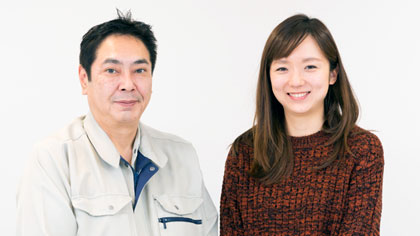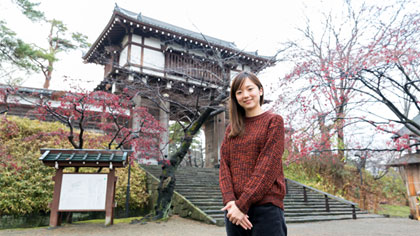-


What is the relationship between Senshu Park and renewable energy?
The wood biomass power plant of United Renewable Energy Co., Ltd. at Mukaihama in the city of Akita is among the largest facilities of its kind in the Tohoku region. We hear that it procures wood chips as its main fuel from across the prefecture and that it receives a large number of visitors for plant tours.
It actually charges visitors for admission to the tour and donates all proceeds to the Senshu Park Sakura Fund under the management of the Akita City Government.
-
What is the relationship between city residents and Senshu Park?
Senshu Park is located 700 meters to the northwest of Akita Station. It is the site of the ruins of Kubota Castle, which was built in 1603 by Yoshinobu Satake, the first lord of the domain of Akita, who took advantage of the natural heights after he was transferred from Hitachi in 1602.
Following the domain registers to the Emperor in 1869, the park was put under the control of the Army Ministry. In 1890, the imperial government sold it to the Satake Family. The Akita City Government loaned the Hommaru and Ninomaru (the primary and secondary compounds) of the castle from the owner and open them to the public. It was placed under the management of the Akita Prefectural Government in 1896 and developed into a park. In 1953, its management was transferred back to the Akita City Government. In accordance with the wishes of the late Mr. Yoshinaga Satake, from the head family of the Satakes, the property was donated as a park to Akita City Government in 1984. Thus, it became a civic park both in name and in substance.
-


What is the origin of the name Senshu Park? And can you tell us about the cherry trees in the park?
The park was named by Ryochi Kano, a scholar of the Chinese classics born in Akita Prefecture. The character for Shu, which is identical to that of Aki in Akita, was topped with the ideogram of Sen, which signifies eternity in hopes for long-lasting prosperity. The park was designated as a cultural property and a place of scenic beauty in the city in 2008. For its gorgeous cherry and azalea blossoms, it is beloved not only by people living in the city but by those in the prefecture and by tourists as well.
There are a large number of trees in the park. With respect to cherry trees, the park is a leading spot in the city. In the cherry blossom season, it attracts more than 300,000 visitors from inside and outside the city. It was chosen as one of the 100 cherry blossom sights by the Japan Cherry Blossom Association in 1992.
-
The cherry trees in the Senshu Park date back to 1892, when 1,170 trees were planted on the basis of a donation from a group called Yushukai represented by Ujinari Hanyu, who later became mayor of the city. Many are believed to still be alive today.
The Akita City Government has, since fiscal 2000, been conducting systematic activities for revitalizing trees, such as improving soil and fertilization around the roots of cherry trees, aiming to preserve the long-standing cherry trees in the park for the next generation. In this situation, many offered to make donations for fostering cherry trees in the park. In response, the Senshu Park Sakura Fund was established in fiscal 2008.
-
What actions will you be taking for the Sakura Fund and what is your hope for the future?
Starting from its creation in fiscal 2008, the Senshu Park Sakura Fund had collected 185 donations totaling around 7.8 million yen by the end of November 2016. Since its start, it has been receiving donations from groups donating every year as well as from businesses and individuals each year. We have recently learned that United Renewable Energy Co., Ltd. will continuously offer contributions to the fund. We will work to gain an understanding of the objectives of the Senshu Park Sakura Fund and the cooperation from many companies and people, so that we can preserve the park as a cherry blossom spot for future generations, while also making it widely known as one of the important tourist resources in the city of Akita.
* Affiliates and titles etc. of the interviewees are current as of the time of the interview or publication.


